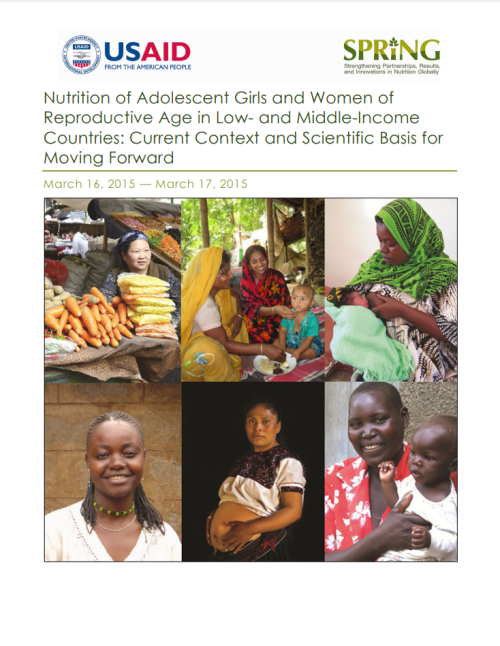USAID/SPRING and PAHO commissioned this paper to summarize existing information on the current nutritional status of adolescent girls, women of reproductive age and pregnant and lactating women in LMICs, in order to inform key practices (similar to those developed for young children), that characterize the diet and feeding practices for these groups. Given the paucity of research on dietary intakes of adolescent girls, WRA and pregnant and lactating women, the authors conducted a systematic literature review. Results indicated reductions in underweight among women, to <10% globally, except in South Asia. Overweight/obesity has increased to nearly 50% in many regions, which suggests that greater percentages of women will enter pregnancy with underlying chronic diseases and are therefore at high risk. Despite the nutrition transition, howver, however, some micronutrient deficiencies persist. While there was variation by age and region, the results pointed to a common set of inadequacies in dietary intake (iron, zinc, vitamin A, vitamin C, calcium) regardless of age and reproductive stage. Given the reductions in underweight and increases in overweight, efforts are needed to identify effective means of facilitating weight loss. Attention must be given throughout the continuum of care—for adolescent girls and WRA—on achieving and maintaining a healthy diet and eating practices.
